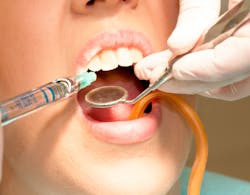ADA: new CDC statistics show need for increased access to dental care, with a greater emphasis on preventing disease
The Centers for Disease Control and Prevention released statistics this week on the high prevalence of dental caries (cavities) among U.S. adults, and the numbers are sobering. Ninety-one percent of Americans over 20 have had cavities at some point in their lives. Notably, the agency reports that 27% of adults over 20 have untreated caries.
“Despite all the advances in our ability to prevent, detect, and treat dental disease, too many Americans—for a variety of reasons—are not enjoying the best possible oral health,” said ADA president Dr. Maxine Feinberg.
Dr. Feinberg noted the substantially greater rates of untreated disease among African Americans (42%) and Hispanics (36%), saying, “The disproportionate rates of disease among some minorities is particularly disturbing and underscores the need for greater outreach to these underserved populations.”
RELATED | Kellogg grant supports development of minority dental school faculty
According to the ADA Health Policy Institute, dental care utilization in 2012 was at its lowest among working age adults since theMedical Expenditure Panel Survey began tracking dental care use in 1996. Adults who do not plan to visit a dentist in the next 12 months most frequently cite cost and the belief that they do not need dental care as reasons.
Responding to the continued need to improve the nation’s oral health, in 2013the ADA launchedAction for Dental Health, a nationwide, community-based movement to provide care (now to people who already suffer from untreated disease), strengthen and expand the public/private safety net, and increase dental health education and disease prevention.
Dr. Feinberg emphasized the ADA’s belief that prevention is the ultimate answer to eliminating the vast majority of dental disease.
“We know that prevention works. While it is critical to treat disease that has already occurred, the public health community needs to increase its focus on proven means of preventing it,” she said. “Community water fluoridation, sealant programs for children, teaching people how to take care of their families’ teeth and gums, and getting the greatest possible number of children and adults into dental homes are the keys to better oral health for everyone.
“We are doubling down, and we urge the broader health care community, federal, state and local officials, the private sector—everyone with a stake in a healthier, more productive nation—to join us.”








